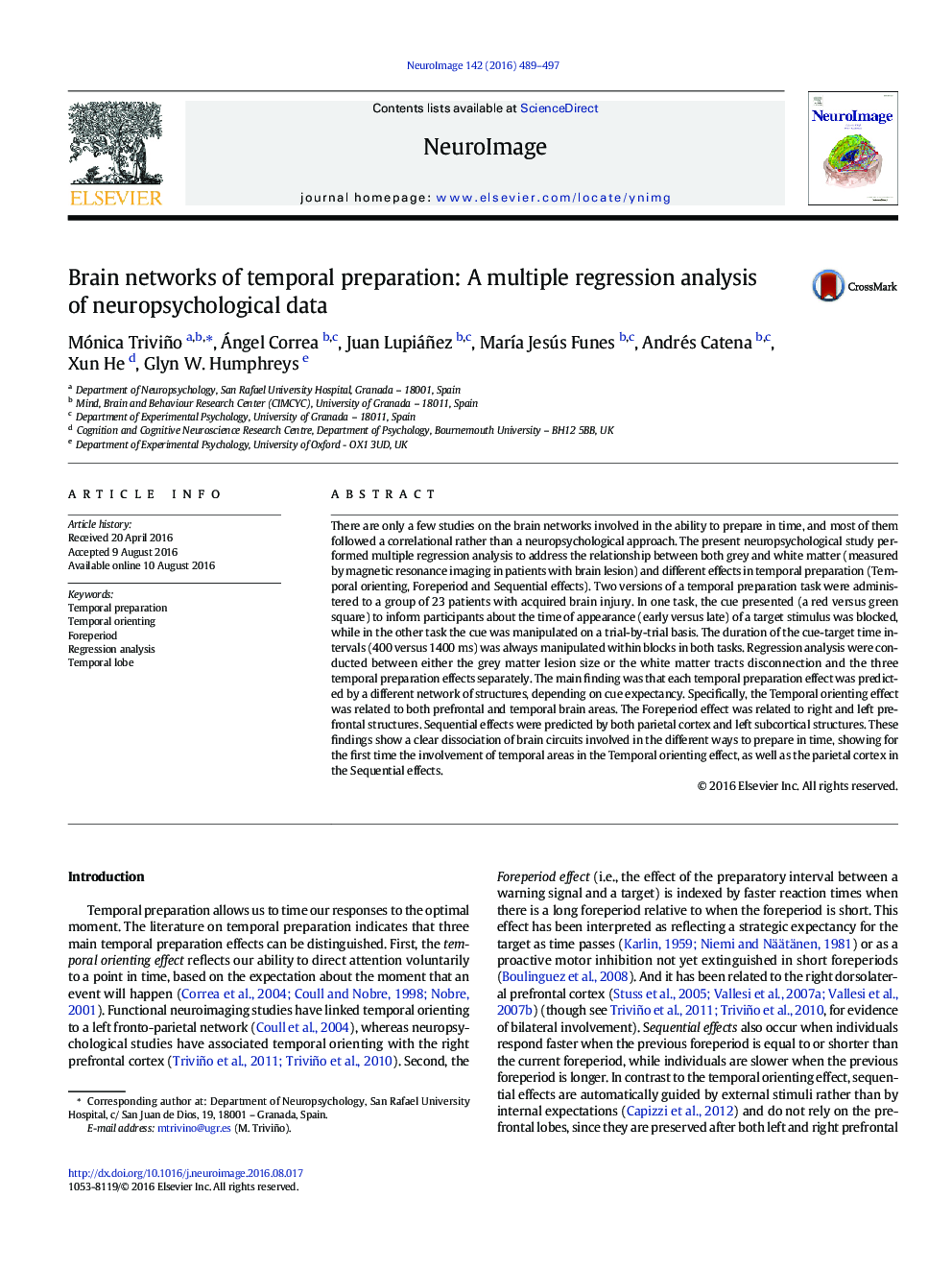| کد مقاله | کد نشریه | سال انتشار | مقاله انگلیسی | نسخه تمام متن |
|---|---|---|---|---|
| 5631454 | 1580866 | 2016 | 9 صفحه PDF | دانلود رایگان |
- Traditionally, temporal preparation has been studied in focalized lesions rather than networks.
- In this study, a predictive model is proposed based on a multiple regression analysis.
- The relationship between brain structures and each temporal preparation effect is suggested.
- A novel relationship between the temporal lobe and the temporal orienting effect is predicted.
There are only a few studies on the brain networks involved in the ability to prepare in time, and most of them followed a correlational rather than a neuropsychological approach. The present neuropsychological study performed multiple regression analysis to address the relationship between both grey and white matter (measured by magnetic resonance imaging in patients with brain lesion) and different effects in temporal preparation (Temporal orienting, Foreperiod and Sequential effects). Two versions of a temporal preparation task were administered to a group of 23 patients with acquired brain injury. In one task, the cue presented (a red versus green square) to inform participants about the time of appearance (early versus late) of a target stimulus was blocked, while in the other task the cue was manipulated on a trial-by-trial basis. The duration of the cue-target time intervals (400 versus 1400Â ms) was always manipulated within blocks in both tasks. Regression analysis were conducted between either the grey matter lesion size or the white matter tracts disconnection and the three temporal preparation effects separately. The main finding was that each temporal preparation effect was predicted by a different network of structures, depending on cue expectancy. Specifically, the Temporal orienting effect was related to both prefrontal and temporal brain areas. The Foreperiod effect was related to right and left prefrontal structures. Sequential effects were predicted by both parietal cortex and left subcortical structures. These findings show a clear dissociation of brain circuits involved in the different ways to prepare in time, showing for the first time the involvement of temporal areas in the Temporal orienting effect, as well as the parietal cortex in the Sequential effects.
Journal: NeuroImage - Volume 142, 15 November 2016, Pages 489-497
